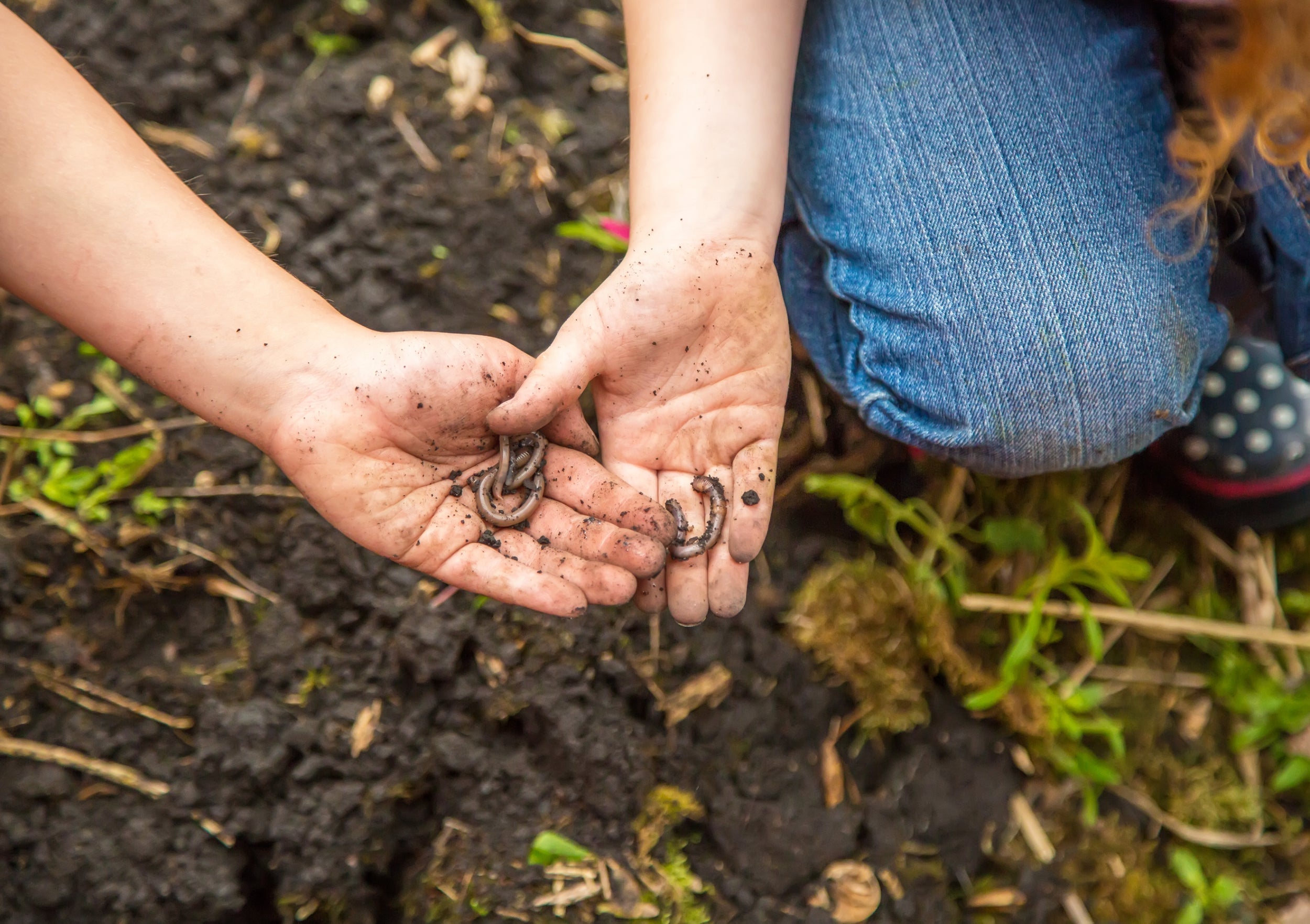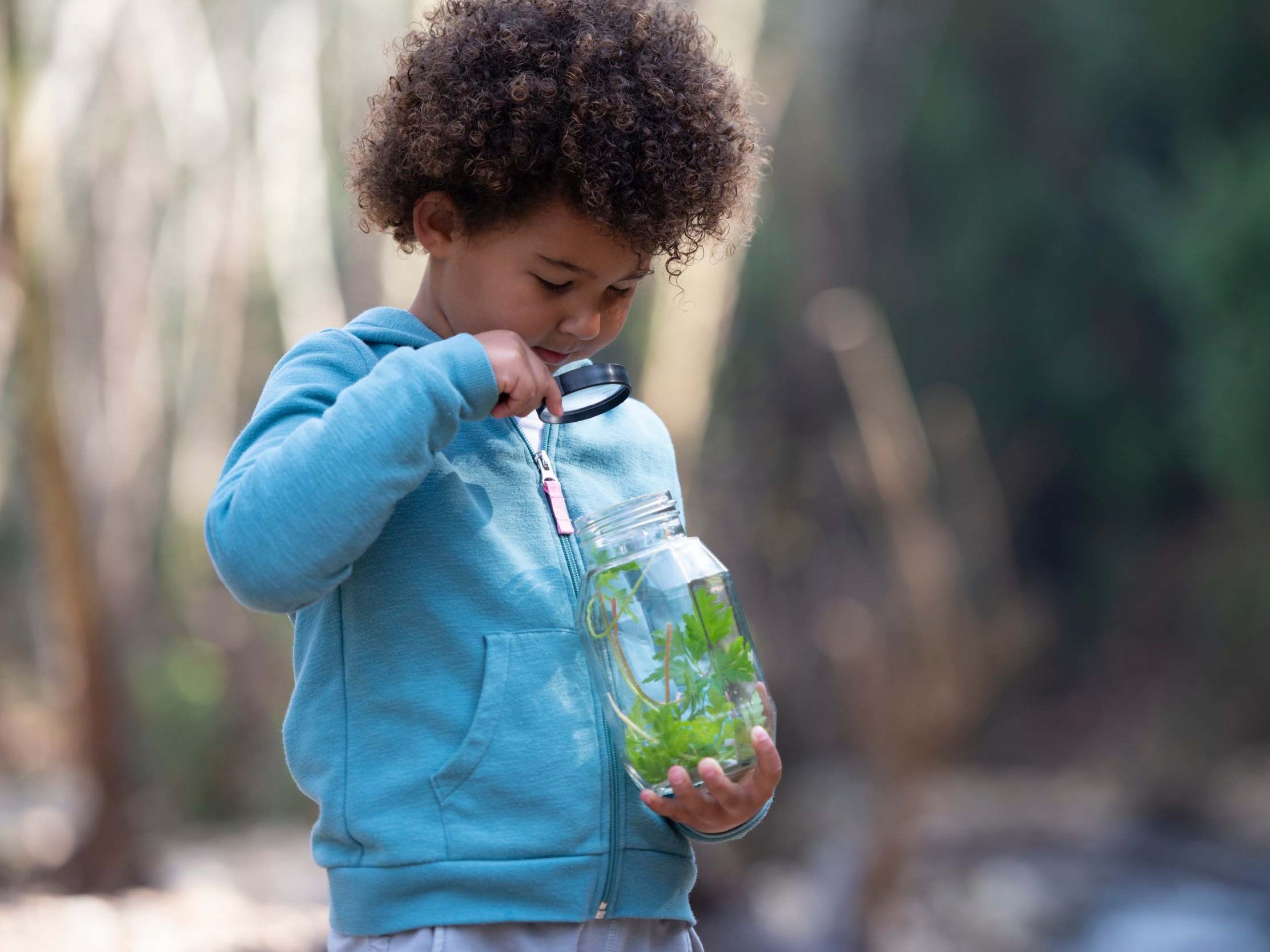‘Allow them to be messy’: 10 ways to get your child into nature
After being stuck indoors for so long, and many of their favourite activities unavailable, now could be the perfect time to get your child immersed in nature, writes Danielle Braff

Your support helps us to tell the story
From reproductive rights to climate change to Big Tech, The Independent is on the ground when the story is developing. Whether it's investigating the financials of Elon Musk's pro-Trump PAC or producing our latest documentary, 'The A Word', which shines a light on the American women fighting for reproductive rights, we know how important it is to parse out the facts from the messaging.
At such a critical moment in US history, we need reporters on the ground. Your donation allows us to keep sending journalists to speak to both sides of the story.
The Independent is trusted by Americans across the entire political spectrum. And unlike many other quality news outlets, we choose not to lock Americans out of our reporting and analysis with paywalls. We believe quality journalism should be available to everyone, paid for by those who can afford it.
Your support makes all the difference.With most camps closed, pools shut down and resorts shuttered because of the novel coronavirus pandemic, there’s one often-overlooked option still available to kids this summer: nature.
And although that’s fantastic news for nature-loving children, it’s problematic for kids who are scared of bugs, afraid to get dirty or bored by trees, trails and rocks – or simply for those who’d prefer to sit inside all day with videogames.
There are plenty of reasons nature is good for kids, including both the physical (movement, lowering blood pressure) and the mental (people feel better just by spending time in nature). And now, with warm weather and no school, is the ideal time to get kids outside. You simply need to figure out how to lure them there.
We’ve got some suggestions.
1) Give them their own space. Jennifer Gulizia, a flower farmer and blogger in Hood River, Oregon, carved out a small space on the family’s flower farm so her five-year-old daughter could grow and cut flowers. Gulizia suggested giving children a small area in the backyard or garden to call their own. This could even be an indoor pot just to get them used to nature (and eventually move outdoors). Add a few seeds, and it’s a mini-garden. It gets kids accustomed to feeling dirt, learning about flowers and understanding that none of it is scary or something to avoid.
2) Play with the bugs and the worms. “We have a worm farm and an ant farm,” says Elle Meager, an Australian-based founder of Outdoor Happens, a blog that helps people create little nature havens in their backyards. “Most kids are intrigued by all the worms wriggling around.” Meager said playing with bugs and worms is fun for kids and may be more appealing to them than simply trying to persuade them to take hikes. Her kids like to dig through the dirt to look for worms – especially after it rains.
3) Allow them to be messy. Children need to be permitted to explore freely in nature, and that isn’t always pretty, and it isn’t always the best thing for nature itself, says Victoria Hilton, founder and chief executive of Stepping Stones Nursery School in Chicago. She said that it’s OK to let children pick flowers and occasionally stomp through the garden. “Sometimes, overprotectiveness towards natural things can lead children to fear interacting with nature itself.” Kids should be allowed to get dirty and explore, and although they should learn to be respectful of nature, they also need to experiment, Hilton says. Even running through the grass to snag a firefly is a classic way to play in nature and learn how amazing and fascinating it can be (and it presents an opportunity to teach kids about why the fireflies glow).

4) Go bigger – or smaller. Simply walking into a forest and expecting children to find a love of the outdoors for themselves is unrealistic for most kids who are accustomed to constant stimulation, says Nick Wilkesmann, head of outdoor education at Haileybury Rendall School in Australia. Try renting mountain bikes, kayaks, surfboards or other toys you can use to make time spent outdoors more interesting. On the other hand, parents may be tempted to go full tilt with a camping trip or a long hike, but that may be too much for some kids, so think about your own child before you choose your adventure. If your child isn’t ready for a full forest immersion, go slowly, says Jenn Wisegarver, who runs a private in-home daycare and is an advocate for Forest Schools for Illinois. “Provide a bowl of potting soil to play truck in on a bath curtain or a tarp,” she said. Or let them play with bug toys and then show them picture books of bugs. Teach them the parts of an insect, and let them marvel at their functions. (For example, a spider’s spinnerets can make a delicate egg sac for their babies.) Then go explore those insects outdoors.
Almost every adult naturalist you will meet has stories of keeping pet frogs, lizards, beetles, fireflies and such. There is something about putting a small creature in a container and naming it
5) Capitalise on food. Involve your children in planting food that they like to eat, or things you’d like them to try, Meager says. “My kids love strawberries, so they’ve planted strawberry plants, and they check on them every day,” she says. They’ll learn that their food doesn’t grow in the supermarket, and they may appreciate it even more. Plus, if they’ve planted their own fruits and veggies, they’ll be more likely to actually eat them. Start by shopping with them for seeds; this can also be done online. “When the seeds arrive, they’re their responsibility,” Meager says. “They plant them, water them and look after them from seed to harvest.” This can be done even without a yard by taking care of plants in pots.
6) Create a nature-themed scavenger hunt. Write down objects for your children to find outdoors – or draw pictures if they can’t read yet, said Marybeth Hamilton, a Minnesota-based blogger and mother of two. The best part of a scavenger hunt is the fact that kids can do it with their eyes if they’d rather not engage their other senses, Hamilton says. Translation: this is great for kids who aren’t ready to touch nature yet.

7) Transform nature into a game. Kristi Mason, a celebrity nanny based in Los Angeles, says she likes to set up a “Ninja Warrior” course in the backyard. First, she sits down with the kids to discuss what kind of obstacles they want. Once there’s a realistic game plan, start getting to work with the kids. “Having them create and build the obstacle course will provide a lot of excitement, but also a sense of accomplishment,” Mason says. Once they master the course, use a timer and they can get competitive.
8) Start a collection. Encourage your kids to collect nature-themed objects, such as shells, rocks or leaves, Mason says, drawn from appropriate places. (Remember not to take items from national parks and other protected habitats, and to teach kids about leaving no trace.) Provide a designated space for the collections, and let the kids show off what they’ve foraged to anyone and everyone. Help your children research the items they’ve collected.
9) Snag a new wildlife pet. Let kids interact with non-endangered, abundant local wildlife, says Jodi Wheeler-Toppen, a science educator and author of This Is a Book to Read With a Worm. “Almost every adult naturalist you will meet has stories of keeping pet frogs, lizards, beetles, fireflies and such,” she says. “There is something about putting a small creature in a container and naming it that breeds love for nature in children.” Wheeler-Toppen suggested helping your kids research what the creature needs to survive, and having them return the pet to the wild after an afternoon or a few days. Another key wildlife lesson: teach your kids that some food is not so good for the animals (ie don’t feed the deer).
10) Live by example. If you’re telling the kids to get outside and play, but they don’t see you doing it, they’ll be less likely to get out of the house, Mason says. “If they see their parents or caregivers sitting inside bingeing TV, eating Wotsits, they will most likely mimic that behaviour,” she says. “If they see them outside having a blast or just enjoying the day, they will be quick to follow.”
© The Washington Post
Join our commenting forum
Join thought-provoking conversations, follow other Independent readers and see their replies
Comments